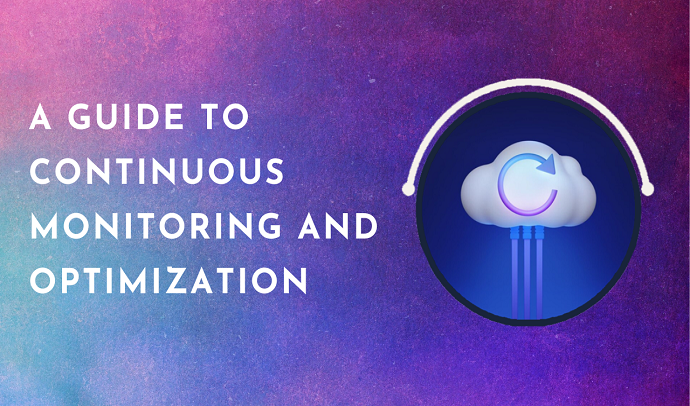Introduction
In the ever-evolving realm of cloud computing, staying ahead requires more than a one-time optimization effort. It demands a dynamic approach that involves continuous monitoring and optimization to ensure that your cloud resources are always aligned with your organization’s evolving needs. In this blog post, we’ll delve into the significance of continuous monitoring and optimization and explore how this dynamic strategy can maximize the efficiency of your cloud infrastructure.

Embracing the Continuous Optimization Mindset
The Changing Landscape of Cloud Usage
Cloud environments are dynamic by nature, with workloads fluctuating based on demand, application usage patterns, and business cycles. A static, one-time optimization might be effective initially, but it won’t keep pace with the changing landscape of cloud usage.

The Cost of Complacency
Failure to continuously monitor and optimize cloud resources can lead to inefficiencies, unnecessary costs, and degraded performance over time. As workloads evolve, so do the optimization opportunities and challenges.
The Pillars of Continuous Monitoring and Optimization
1. Real-Time Monitoring
Continuous monitoring starts with real-time visibility into your cloud environment. Robust monitoring tools provide insights into resource utilization, application performance, and user behavior, allowing you to make informed decisions based on up-to-the-minute data.

2. Proactive Alerting
Set up proactive alerts to notify you of any irregularities or potential issues. By addressing anomalies promptly, you can prevent performance degradation, security breaches, and unnecessary costs before they escalate.
3. Automated Optimization
Leverage automation to implement continuous optimization strategies. Automated scaling, instance rightsizing, and load balancing can dynamically adjust resources based on demand, ensuring optimal performance and cost efficiency.
Implementing a Continuous Monitoring and Optimization Strategy
1. Establish Baselines
Start by establishing baselines for performance and resource utilization. Understanding normal patterns allows you to identify deviations and areas for improvement more effectively.
2. Regular Audits
Conduct regular audits of your cloud environment to identify optimization opportunities and ensure that your infrastructure aligns with current business needs. This includes reviewing resource allocation, cost structures, and security protocols.
3. Cloud Governance
Implement strong cloud governance policies to maintain control over resource provisioning, access controls, and compliance. Governance ensures that optimization efforts align with organizational goals and policies.
The CloudOpty Advantage
To streamline and enhance your continuous monitoring and optimization journey, consider leveraging the expertise and tools provided by CloudOpty. Our solutions are designed to empower organizations with real-time insights, automated optimization, and proactive alerting, ensuring that your cloud infrastructure is always at its peak performance.
Conclusion
In conclusion, continuous monitoring and optimization are not just strategies; they are essential components of a successful cloud management approach. By embracing the dynamic nature of the cloud and adopting a continuous optimization mindset, organizations can navigate the complexities of the digital landscape with agility, efficiency, and cost-effectiveness.
For comprehensive cloud optimization solutions and expert guidance on implementing a dynamic approach to continuous monitoring and optimization, explore the offerings at CloudOpty. Your journey to maximizing the efficiency of your cloud infrastructure begins here.
